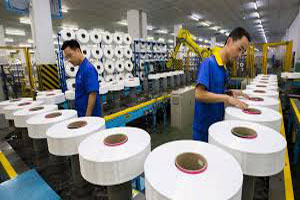
China to see rag trade slipping through its fingers
YarnsandFibers News Bureau 2016-01-21 15:00:00 – BeijingChina though stands as the world leader with US$170 billion worth of garment exports a year but the trend since early last year has clearly been down, in part because of stagnant demand in world markets and, to some extent, because unit prices are down.
The dilemma for all developing economies that rely heavily on the rag trade is now facing China as new competitors emerge underneath it.
These difficulties, however, have not seemed to affect a group of up and coming competitors in Asia – Vietnam, Bangladesh, Sri Lanka and Cambodia. In total, their garment exports still amount to only about 30 per cent of mainland China’s but they are all growing.
The real laggard here is Hong Kong, which, as late as 2002, still boasted a higher value of garment exports than all the Challengers combined but which has now finally vanished from the rag trade.
Some 20 years ago manufacturing wages in mainland China were pretty much the same as in Vietnam and Bangladesh, at little more than US$500 a year. According to the National Bureau of Statistics now the mainland’s average manufacturing wage in 2014 (the latest data available) was the equivalent of US$8,300 a year. The comparable figure for Vietnam is about US$3,000 and for Bangladesh about US$1,000.
Wage levels are not the only determinant of who rises and who falls in the industry. If they were, India with its vast population and wages at half of Vietnam’s level would export much more than Vietnam instead of only a fraction. The structural inefficiency of the Indian economy is always notable.
But garment making is an industry that does not require much capital input and has always resisted automation. The required textiles have long
been the product of automated equipment but the machine has yet to be invented that can sew an acceptable seam without the guiding hand of the seamstress.
The garment industry is thus an ideal start-up industry for economies with a willing work force and a bare minimum of transport and financial
infrastructure to accommodate it. Things have been so since Britain was the first to take this path almost 200 years ago.
What comes easy with low wages, however, also goes easy when success starts to push wages up. The garment industry is a first step for developing economies. Those who do not soon climb higher risk being forced to climb down again.
China’s rag trade can no longer be its future.
Market Intelligence
Ask for free sample Report

experience
Customer Base
dedicated team
Countries Served Worldwide









